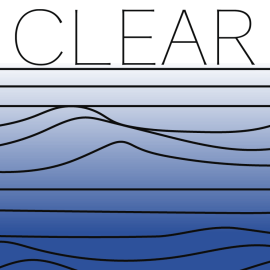
Colonialism in Canada is an ongoing structure whereby settler society and government assert sovereignty over lands already occupied by Indigenous peoples. This includes disrupting and exterminating Indigenous life, values, and self-determination, as well as disruption of established relationships between bodies, lands, waters, airs, plants, animals and other beings.
Pollution is Colonialism because:
Land is at the center of colonialism
Industry and the state disrupt and damage the many relationships that make up the Land when they understand it as a resource. They use the Land to extract value, such as in mining, but use the Land as a place to put pollution — from radioactive waste to urban sewage — as another way to make economic value. Using the Land for the best interests of industry, profit, settlers, or colonial governments is a central part of colonialism.
Pollutants are material forms of harm
Canada’s extraction economy – from fur to fossil fuels – has been at the forefront of Canadian disruptions to Indigenous Land and self-determination. The pollution from extraction, as well as from refining, manufacturing, and other industries, is often concentrated in Indigenous communities, becoming a form of intergenerational violence.
More than this, persistent pollutants, such as PCBs, methylmercury, and radioactive isotopes, have no respect for jurisdiction, distributing harm and death to people, fish, animals, plants, water, and other parts of the Land, disrupting relationships between them. Pollution is a significant and ongoing form of colonial violence in Canada, a violence that overflows legal jurisdiction and local point sources. As Native Youth Sexual Health Network has shown, “Violence on the Land is Violence on our Bodies.”
The state gives permission to pollute
It is legal for some pollution to occur under Canadian and U.S. environmental law. Under the permission-to-pollute system in Canada, some effluents can be released to a certain amount, and spills and leaks are considered acceptable risks even though they happen regularly. Canada’s current toxics governance relies on industries to self-report their emissions, and to do the research that determines whether their own chemicals are harmful. It is thus difficult to get accurate information from the government about the past and present status of environmental harms.
There is little accountability about the role of pollution in Canadian colonialism; for example, pollution was not discussed in the Truth and Reconciliation process. Until 2016, Canada refused to be a signatory to the United Nations Declaration of the Rights of Indigenous People and the right to free, prior and informed consent. This includes consent to be polluted or not. How might a different environmental governance system acknowledge the significant and ongoing role of pollution in Canadian colonialism?
A Call to Action
It took a lot of work to make the state acknowledge the injustices of residential schools, but this is essential to decolonization and Indigenous resurgence and self-determination. Similarly, it will take a lot of work to bring the state, industry, and others into responsibility for the violences of pollution. There are already many groups and nations calling for action and change:
- Native Youth Sexual Health Network & Women’s Earth Alliance. (2015). “Violence on the Land, Violence on our Bodies.”
- T?ilhqot’in National Government. (2017). “In time of crisis, B.C makes unbelievable move to approve drilling permits for twice rejected New Prosperity mine.”
- Mikisew Cree First Nation. (2015). “Written Brief of the Mikisew Cree First Nation to the Standing Committee on Environment and Sustainable Development.”
- Gwich’in Council International, Arctic Athabaskan Council, Climate Action Network Canada – Réseau action climat Canada, Ecology North, Pembina Institute. (2008). “The Inuvik Declaration on Arctic Climate Change and Global Action.”
- NYC Stands with Standing Rock Collective. (2016). “#StandingRockSyllabus.”
- Xapuri Declaration (2017). “We reject any form of climate colonialism.”
- Idle No More. The Manifesto.
- Indigenous Environmental Justice Project
- EcoJustice. (2007). “Exposing Canada’s Chemical Valley: An Investigation of Cumulative Air Pollution in the Sarnia, Ontario Area.”
- Free Grassy Narrows. (2016). “River Run 2016: Healthy river, healthy people.”
- Aamjiwnaang and Sarnia Against Pipelines. (2017). “Aamjiwnaang Water Gathering and Toxic Tour 2017.
- Stop Alton Gas
- Chippewas of the Thames First Nation. #NoLine9.
- Nunatsiavut Government. (2016). #MakeMuskratRight & “Lake Melville: Avativut, Kanuittailinnivut (Our Environment, Our Health)”
- Chippewas of Georgina Island First Nation. Stand with #GIFNLakeGuardians.
Text by EDAction & Civic Laboratory for Environmental Action Research (CLEAR)
Image: With Songs To Pull Oil from Water, 2017, by Elizabeth LaPensée

1 Comment
Comments are closed.